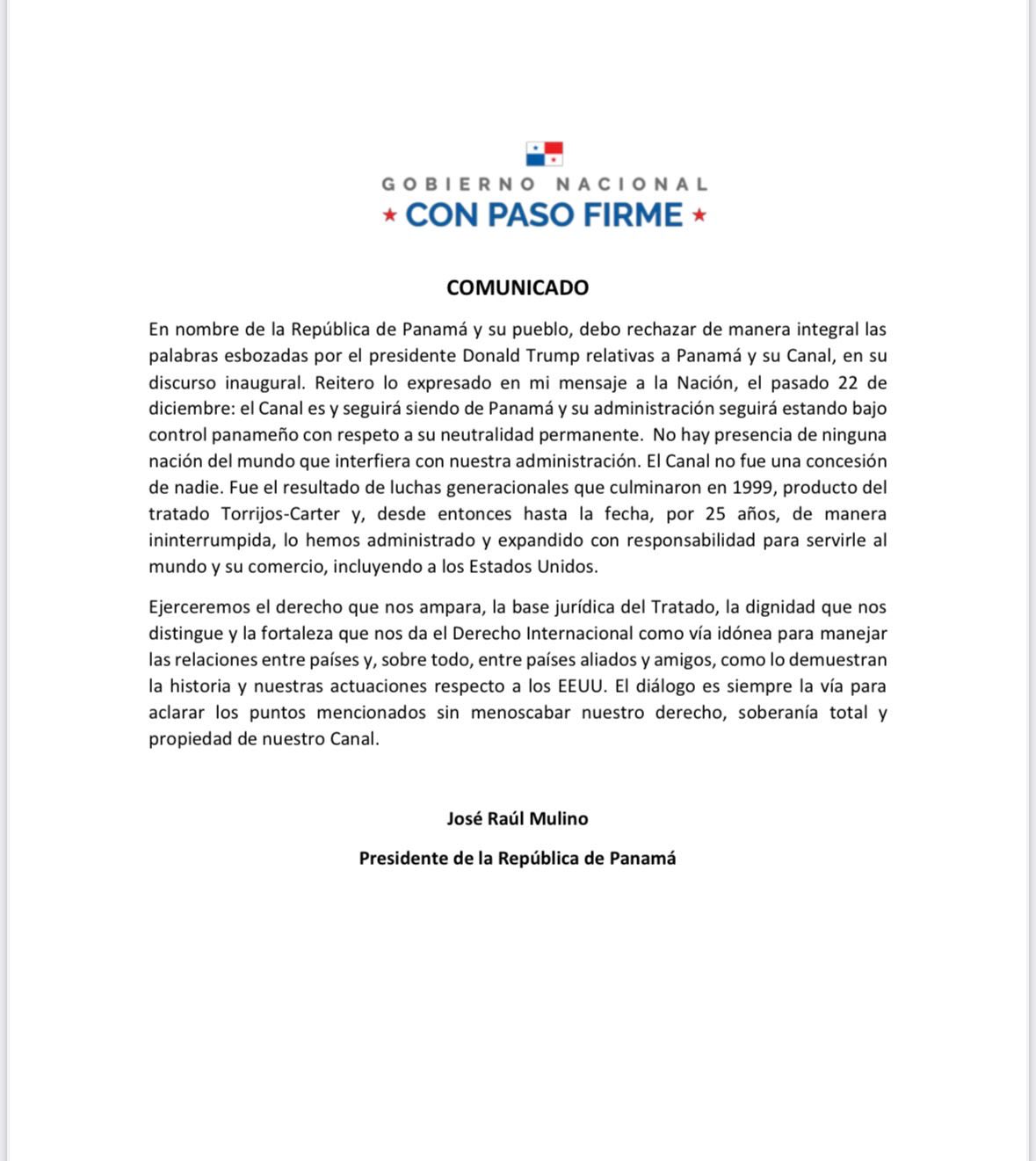In his inauguration address on January 20, newly sworn-in US President Donald Trump declared that the United States would reclaim control of the Panama Canal, citing the 19th-century expansionist principle of “Manifest Destiny” as a cornerstone of his foreign policy vision.
Trump reiterated his pre-inauguration accusations that Panama violated the terms of the 1999 handover agreement and ceded operational control of the canal to China, allegations that Panamanian officials strongly deny.
“We didn’t give it to China. We gave it to Panama, and we’re taking it back,” Trump told the crowd gathered for his swearing-in ceremony.
While he did not elaborate on the timeline or methods to achieve this objective, the newly elected US President has previously refused to rule out military intervention, a stance that has drawn sharp criticism from both allies and adversaries in Latin America.
Panama’s President Jose Raul Mulino quickly responded to Trump’s remarks, taking to the social media platform X to defend his country’s sovereignty and the canal’s administration.

“I must comprehensively reject the words of President Donald Trump. The canal is and will remain Panama’s,” Mulino wrote.
He also dismissed Trump’s claims of Chinese involvement in canal operations. “There is no presence of any nation in the world that interferes,” he said, adding that Panama has responsibly managed the canal for 25 years.
Mulino emphasized that the canal was not handed over as a concession but was the outcome of decades of negotiation and struggle, ultimately formalized through the Torrijos-Carter Treaty in 1999.
Under the Panamanian administration, the canal has undergone major expansion to accommodate global trade, including a large share of US commerce, he added.
Mulino called on Trump to engage in dialogue, reiterating Panama’s commitment to peaceful international relations.
Trump’s remarks on the Panama Canal are not the first time he has proposed bold territorial ambitions. He has also expressed interest in acquiring Greenland, an autonomous territory of Denmark. The proposal was flatly rejected by Danish officials, who dismissed the idea as unrealistic.
Though Greenland was not mentioned in Trump’s inaugural address, the president signaled his intent to pursue an aggressive expansionist agenda.
He stated, “The United States will once again consider itself a growing nation, one that increases our wealth, expands our territory, builds our cities, raises our expectations and carries our flag into new and beautiful horizons.”
Why Trump Targets Panama Canal?
The Panama Canal serves as one of the United States’ most vital trade routes, with approximately 40% of all US container ships passing through this key passage linking the Atlantic and Pacific Oceans.
In his first address of his second term, President Trump reiterated concerns about what he described as unfair treatment of American ships, including those of the US Navy, claiming that they are being “severely overcharged” in their use of the canal.
Although the US constructed the canal in the early 20th century, following years of protests, President Jimmy Carter signed a treaty in 1977 to gradually return control to Panama, a decision Trump has denounced as “a big mistake.”
In 1999, Panama assumed full control over the canal, with an agreement ensuring that it would remain neutral and open to vessels from all nations.
Trump’s concerns regarding China’s influence over the canal stem from two ports at either end of the waterway, operated by CK Hutchison Holdings, a Hong Kong-based company that obtained the rights in 1997.

Additionally, during his first term, China’s relationship with Panama grew stronger. In 2017, Panama severed ties with Taiwan, aligning itself with Beijing, and in 2018, it became part of China’s Belt and Road Initiative.
Despite Trump’s concerns, Panamanian President José Raúl Mulino has emphasized Panama’s strong and successful management of the canal.
The Panama Canal Authority, after dealing with a severe drought in 2024 that reduced ship transits, has since outlined plans to prevent a recurrence and is investing heavily in new revenue streams, such as a fuel pipeline running alongside the canal.
Interestingly, this initiative aligns with US interests, as Mulino aims to increase the volume of American oil shipments through the canal alongside other strategies to diversify Panama’s revenue.
The Panama Canal Authority is also planning for a sustainable future, with a goal to achieve net-zero emissions by 2050, and allocated US$8.5 billion to this program.
While Trump has criticized canal revenues as “ridiculous and highly unfair,” the canal’s other major customers, China and Japan, have not raised any complaints.
- Contact the author at ashishmichel(at)gmail.com
- Follow EurAsian Times on Google News




